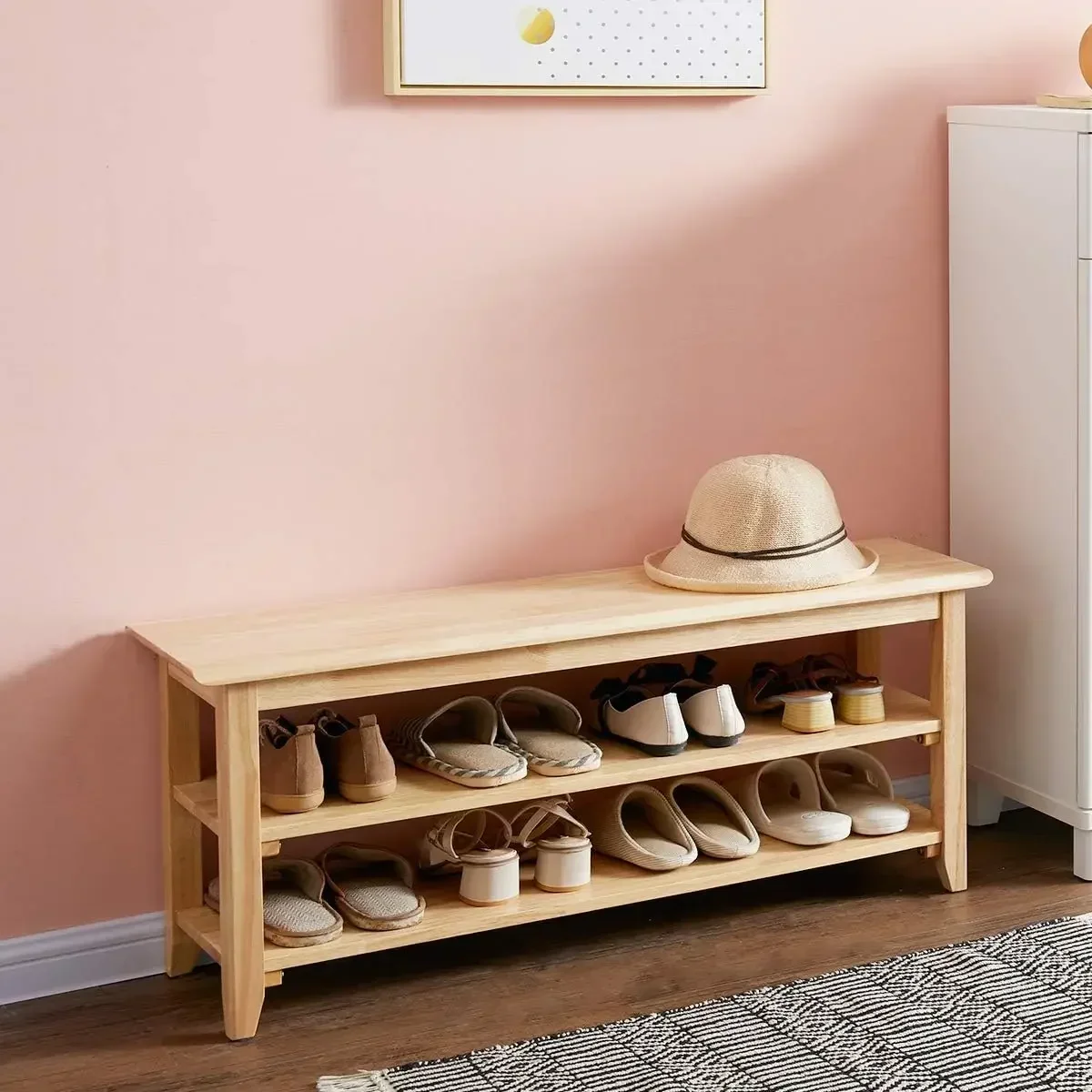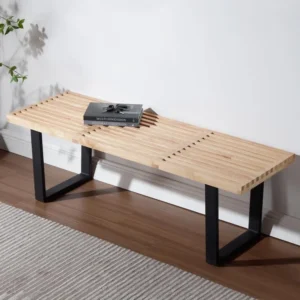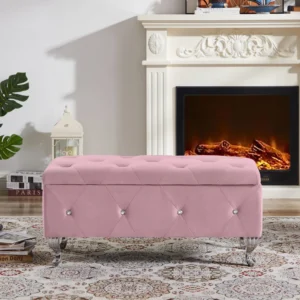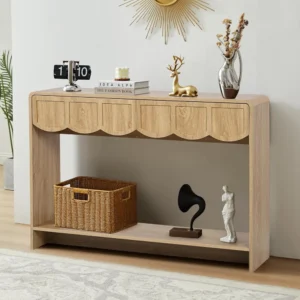Understanding the Essence of Minimalist Bench Design
Minimalist bench design embraces a fundamental philosophy that has become increasingly popular in modern home décor: less is more. At its core, minimalist furniture relies on three key principles: simplicity in form, clean uninterrupted lines, and practical functionality. Unlike ornate traditional benches with detailed carvings or decorative elements, minimalist benches strip away excess to reveal the beauty in basic forms.
The essence of minimalist bench design lies in:
- Purposeful simplicity that eliminates unnecessary ornamentation
- Clean geometric or subtle organic lines that create visual calm
- Functional design where every element serves a clear purpose
- Balance between form and function without sacrificing either
Research has consistently shown that minimalist spaces create psychological benefits, including reduced visual stress and a greater sense of calm. This happens because our brains process fewer visual stimuli in clean, uncluttered environments, allowing for mental relaxation and focus.
Understanding foundational minimalist entryway furniture guide principles helps explain why these benches have such lasting appeal. They aren’t merely furniture pieces but expressions of a design philosophy that values intentional living.
The beauty of minimalist bench design extends beyond aesthetics. Even in the smallest areas, minimalist benches for small entryways demonstrate how thoughtful design can transform limited spaces into functional, visually appealing areas without creating a sense of crowding or clutter.
Why Choose a Simple Bench for Your Minimalist Space
Selecting a simple bench for your minimalist space offers numerous advantages that align perfectly with minimal design principles. These versatile pieces earn their place in thoughtfully curated homes for several compelling reasons:
Multi-functionality: A minimalist bench serves multiple purposes—seating, display surface, temporary storage spot—reducing the need for multiple furniture pieces.
Visual space expansion: The streamlined profile and often elevated design (with space underneath) creates a sense of openness, making rooms appear larger and less crowded.
Versatile placement: Simple benches work equally well in entryways, dining areas, bedrooms, or living spaces, providing consistent design language throughout your home.
Timeless appeal: Minimal designs resist trend cycles, offering lasting aesthetic value that won’t quickly look dated.
Small space design studies consistently show that furniture with clean lines and visible floor space underneath (as with many minimalist benches) creates an illusion of greater space. This visual trick works because the eye can travel further, making rooms feel more expansive than they actually are.
Additionally, the versatility of minimalist benches supports the core minimalist principle of owning fewer, higher-quality pieces that serve multiple functions—the essence of thoughtful consumption and intentional living.
Incorporating modern entryway furniture ideas with simple benches establishes a welcoming yet uncluttered transition space that sets the tone for your entire home. The right bench makes a subtle yet powerful statement about your design sensibilities.
Scandinavian Simplicity: Natural Warmth Meets Function
Scandinavian bench design exemplifies how minimalism can feel warm and inviting rather than cold or sterile. This distinctive Nordic approach balances clean lines with natural materials to create pieces that are both visually light and emotionally welcoming.
The hallmarks of Scandinavian bench design include:
- Light-toned woods like oak, ash, birch, and pine that bring natural warmth
- Streamlined silhouettes with subtle organic curves that soften the geometric forms
- Tapered legs that create visual lightness and elevation from the floor
- Functional design that prioritizes comfort and usability alongside aesthetics
- Limited ornamentation that allows materials and craftsmanship to speak for themselves
The Scandinavian design philosophy incorporates “hygge”—the Danish concept of coziness and contentment—even while maintaining minimalist principles. This appears in subtle ways: the gentle curve of a seat for comfort, the tactile smoothness of well-sanded wood, or the addition of a simple cushion in neutral, natural fabrics.
These benches excel in bright, airy spaces with natural light, often paired with light walls and floors to create the characteristic Scandinavian brightness. Their visual lightness makes them perfect for smaller spaces where bulkier furniture would overwhelm.
Our modern entryway bench collection features several Scandinavian-inspired pieces that combine this signature warmth with practical functionality, ideal for creating a welcoming first impression in your home.
Japandi Fusion: Where Japanese Minimalism Meets Nordic Function
Japandi design represents a harmonious fusion between Japanese minimalism and Scandinavian functionality—two design traditions that, despite geographic distance, share remarkable philosophical similarities. This hybrid style creates benches with distinctive characteristics that honor both traditions while forming something uniquely beautiful.
Where Scandinavian design brings warmth through lighter woods and subtle curves, Japanese influence adds deeper wood tones (like walnut and mahogany), precise joinery, and a profound respect for craftsmanship. The result combines the best elements of both worlds:
- Natural materials with visible grain patterns and texture
- Balanced proportions that feel intentional and harmonious
- Muted, nature-inspired color palettes that create calm
- Higher craftsmanship with attention to joinery and finishing details
- Asymmetrical balance that creates visual interest within simplicity
The Japanese concept of wabi-sabi—finding beauty in imperfection and transience—influences Japandi bench design through subtle asymmetry or highlighting natural wood knots rather than hiding them. This adds character without compromising the clean minimalist lines.
Storage often integrates seamlessly into Japandi benches through hidden compartments or simple shelf components beneath the seat. These functional elements maintain clean lines and contribute to the practical nature of the piece without disrupting its aesthetic purity.
For spaces requiring both beauty and function, our entryway bench storage options include several Japandi-inspired pieces that demonstrate how storage can be incorporated without sacrificing minimalist principles.
Modern Minimalist: Contemporary Sleekness and Precision
Modern minimalist bench design represents perhaps the purest expression of minimalist principles, focusing on geometric precision, material honesty, and structural elegance. These benches make a strong architectural statement through their commitment to essential forms.
Key characteristics of modern minimalist benches include:
- Crisp, precise edges and geometric forms that celebrate clean lines
- Material combinations like steel and glass or monolithic concrete forms
- Reduced visual weight through cantilevered designs or slender supports
- Absence of decorative details, allowing structural elements to provide visual interest
- Carefully considered proportions that create perfect balance
Materials in modern minimalist benches are often chosen for their structural properties as much as their aesthetics. Brushed or matte stainless steel, architectural concrete, tempered glass, and precisely milled wood create a sophisticated palette that emphasizes texture and finish rather than color variation.
Modern minimalist benches function as architectural elements in contemporary spaces, creating strong horizontal or vertical lines that complement modern architecture. They work exceptionally well in spaces with large windows, open floor plans, and neutral color schemes, where their sculptural quality can be fully appreciated.
For entryways seeking this pure contemporary look, our collection of sleek benches for modern entryways offers options that enhance architectural features while providing functional seating and surface area.
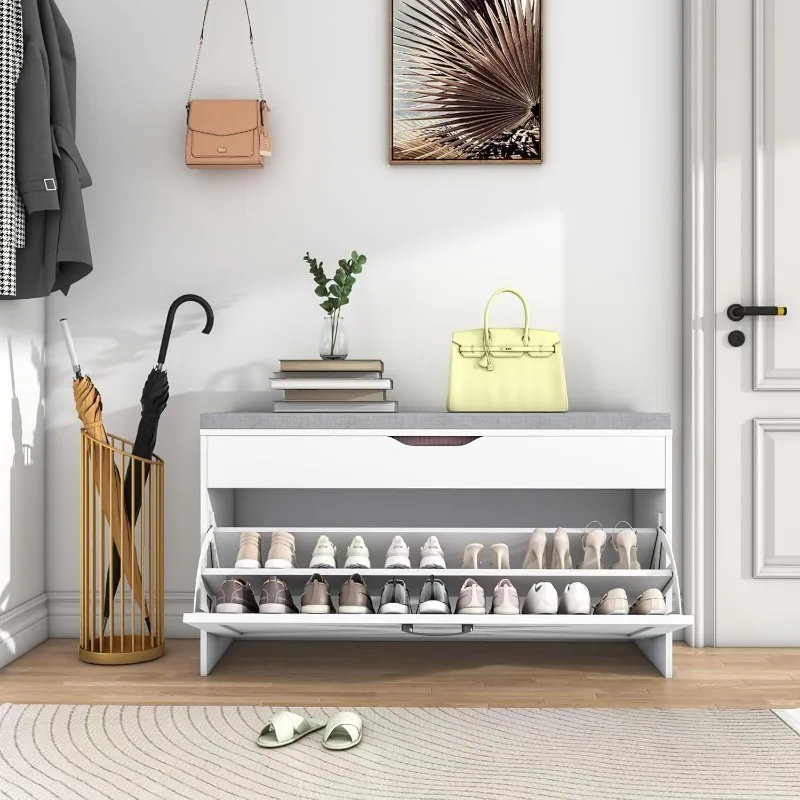
Industrial Simplicity: Raw Materials with Clean Lines
Industrial minimalist bench design proves that simplicity doesn’t mean blandness. This distinctive style combines raw, often reclaimed materials with clean minimalist lines to create pieces with character and substance while maintaining minimalist principles.
What distinguishes industrial minimalist benches:
- Metal frames in blackened steel, raw iron, or aluminum with visible welding details
- Reclaimed or distressed wood that tells a story through its texture and patina
- Functional hardware that serves as minimal decoration (bolts, rivets, simple brackets)
- Straightforward construction methods that celebrate how things are made
- Balance between ruggedness and refinement
Unlike more delicate minimalist styles, industrial benches embrace a certain robustness and visual weight. However, they maintain minimalist principles through their straightforward construction, lack of ornamental details, and focus on material honesty.
These benches work particularly well in spaces with architectural features like exposed brick, concrete floors, or visible ductwork. They provide a perfect counterbalance in loft apartments, converted industrial spaces, or urban homes looking to add character without clutter.
For compact spaces that need this industrial character, our small entryway bench collection includes several industrial-influenced pieces that deliver big style in smaller dimensions.
Mid-Century Modern Influence: Timeless Simplicity Reimagined
Mid-century modern design, when filtered through a minimalist lens, creates benches that combine nostalgic elements with contemporary restraint. This approach celebrates the clean lines and functional beauty of mid-century design while adhering to minimalist principles of simplicity and purpose.
Key elements of minimalist mid-century benches include:
- Tapered legs that create visual lightness and elevation
- Gentle organic curves that soften geometric forms
- Warm wood tones (particularly walnut, teak, and oak)
- Thoughtful proportions that feel both vintage and timeless
- Limited ornamentation that lets materials and craftsmanship shine
What makes mid-century minimalist benches special is their ability to add subtle character to minimal spaces. The slight curves, angled legs, or gentle tapering reference a beloved design era without overwhelming the clean simplicity that minimalism demands.
These benches add warmth to contemporary spaces that might otherwise feel too stark or clinical. They work particularly well in homes that blend modern and vintage elements or in spaces seeking to soften strict minimalism without abandoning its principles.
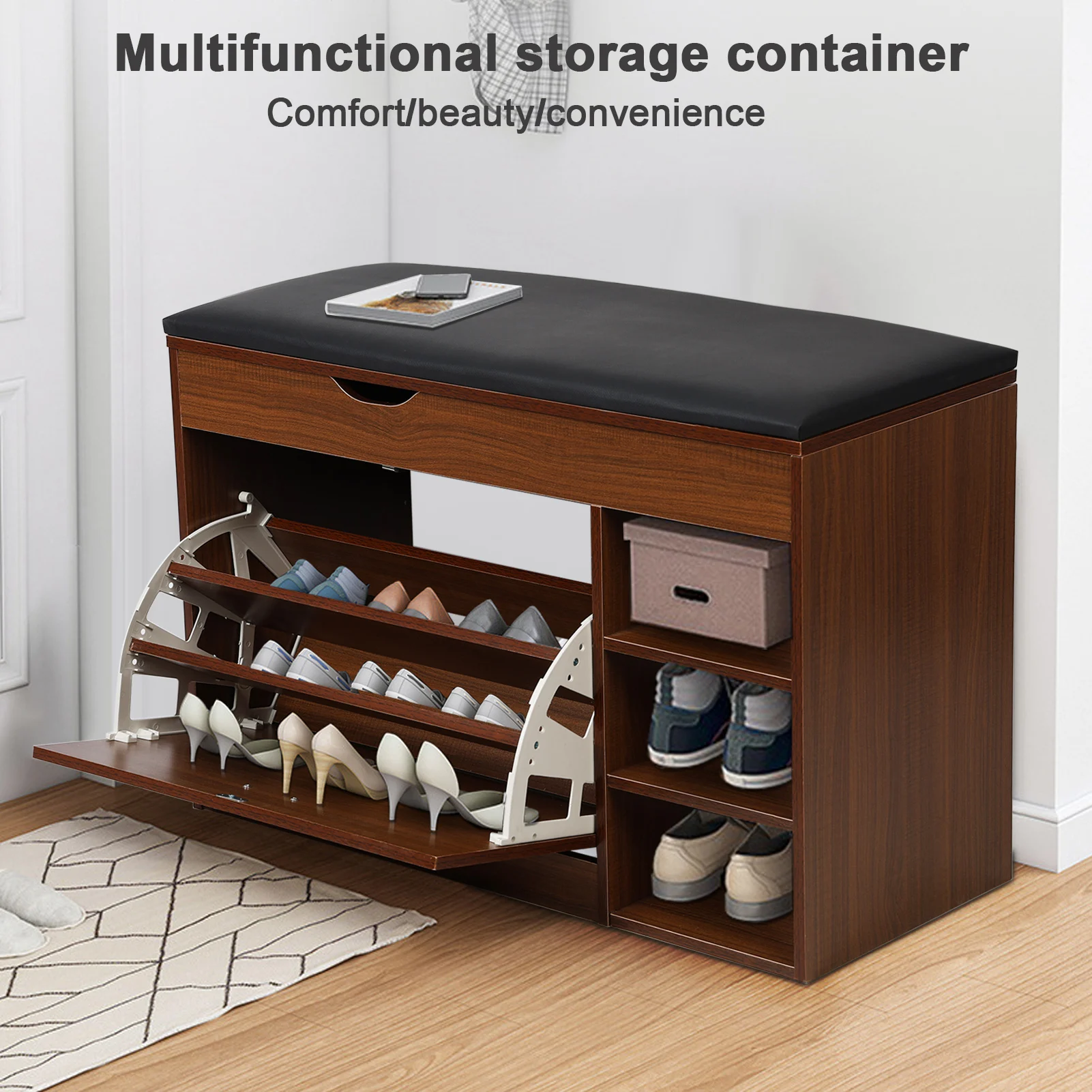
Key Materials That Define Minimalist Bench Design
Material selection plays a crucial role in minimalist bench design, with each material bringing distinct qualities to the finished piece while maintaining clean, simple lines. Understanding these materials helps in selecting the perfect bench for your minimalist space.
Wood in Minimalist Design
Wood remains perhaps the most versatile material for minimalist benches, with different species creating different effects:
- Light woods (ash, maple, birch): Create airy, Scandinavian-inspired lightness
- Medium woods (oak, cherry): Offer warmth with visible grain patterns
- Dark woods (walnut, mahogany): Provide sophistication and visual weight
- Reclaimed/weathered woods: Add character while maintaining clean lines
Metal Elements
Metal components contribute structure and visual interest:
- Black steel: Creates strong contrast and architectural definition
- Stainless steel: Offers sleek, contemporary presence
- Brushed brass: Adds subtle warmth without ornate detailing
- Thin metal profiles: Maintain visual lightness while providing structural integrity
Upholstery Approaches
Minimal upholstery in benches focuses on:
- Neutral fabrics (wool, cotton, linen) in solid colors or subtle textures
- Leather or leather alternatives in natural, unmarked finishes
- Minimalist cushioning that maintains clean lines while adding comfort
- Removable cushions that preserve the bench’s clean form when desired
For those seeking a natural material palette, our wood entryway bench collection offers numerous options that celebrate wood’s beauty while maintaining minimalist principles.
Strategic Placement: Entryway Benches for First Impressions
The entryway presents a perfect location for minimalist bench placement, creating both functional seating and a design statement that sets the tone for your entire home. A well-chosen bench transforms this transitional space while supporting daily routines.
When selecting an entryway bench, consider these practical dimensions:
- Height: 16-20 inches (40-50 cm) for comfortable seating when removing shoes
- Width: Proportional to your entryway, typically 36-60 inches (90-150 cm)
- Depth: 14-18 inches (35-45 cm) to provide seating without obstructing passage
- Clearance: Allow minimum 24 inches (60 cm) in front for comfortable use
Storage integration in entryway benches requires careful consideration to maintain minimalist principles. Look for:
- Hidden compartments beneath lift-top seats
- Simple open shelving for shoes that maintains clean lines
- Drawer storage with minimal hardware or push-to-open mechanisms
Styling minimalist entryway benches requires restraint. Consider a single decorative object, a small plant, or wall art above the bench rather than cluttering the bench itself. This preserves its function while maintaining visual simplicity.
For complete entryway organization that maintains minimalist principles, explore our guide to minimalist entryway organization that complements bench selection with strategies for maintaining clutter-free spaces.
Dining Area Integration: Benches for Minimal Dining Spaces
Minimalist benches offer elegant alternatives to traditional dining chairs, creating clean visual lines and space efficiency in dining areas. This application demonstrates how minimalism enhances both aesthetics and functionality.
When integrating benches into dining areas, maintain these proportional relationships:
- Bench height: 18-20 inches (45-50 cm) for comfortable dining
- Table height: Standard 28-30 inches (70-76 cm) works ideally with bench seating
- Clearance: Benches should slide partially under the table when not in use
- Length: Typically 6-12 inches (15-30 cm) shorter than the table side they accompany
The space efficiency of bench seating is particularly valuable in minimalist homes where space optimization matters. A standard dining chair requires about 24 inches (60 cm) of space, while bench seating can accommodate more people in the same linear footage without visual clutter.
Backless benches maintain open sight lines across dining spaces, enhancing the sense of spaciousness prized in minimalist design. However, if comfort for longer meals is a priority, consider benches with simple, low backs that maintain clean lines.
For compact dining spaces, our narrow entryway bench collection includes several models that work beautifully at dining tables when space efficiency matters most.
Bedroom and Living Space Applications: Multipurpose Minimalism
Minimalist benches enhance bedrooms and living spaces with their versatility and clean visual presence. These multipurpose pieces demonstrate how minimalist furniture adapts to various needs while maintaining design coherence.
Bedroom Applications
In bedrooms, minimalist benches serve several functions:
- Foot-of-bed seating, ideally sized to 2/3 the width of the bed
- Window nook reading spots that celebrate natural light
- Dressing area seating that supports daily routines
- Temporary surface for clothing or bedroom items
A bedroom bench should maintain proportional relationships with other furniture, particularly the bed. For standard queen beds (60 inches/152 cm wide), a bench approximately 40 inches (102 cm) wide creates balanced proportions.
Living Space Applications
In living areas, minimalist benches provide:
- Flexible seating that can move where needed for gatherings
- Alternative coffee table surfaces with more versatility
- Display platforms for a few carefully selected objects
- Visual breaks in larger spaces without heavy visual weight
Living room benches work particularly well in front of windows, against walls, or as coffee table alternatives in smaller spaces. Their low profile maintains sight lines while providing functional surfaces.
For both applications, our popular minimalist benches with storage provide hidden functionality that supports the clutter-free aesthetic essential to minimalist spaces.
Storage Integration: Maintaining Minimalism While Maximizing Function
Storage integration represents perhaps the greatest challenge in minimalist bench design: how to incorporate practical storage without compromising clean lines and visual simplicity. Successful storage benches solve this dilemma through thoughtful design strategies.
Effective minimalist storage benches employ several approaches:
- Hidden compartments beneath lift-top seats with invisible or minimal hinges
- Clean-lined drawers with recessed finger pulls or touch-latch mechanisms
- Simple open shelving beneath seating surfaces for frequently used items
- Sliding panels that conceal internal storage while maintaining smooth surfaces
When evaluating storage benches for minimalist spaces, consider both aesthetics and functionality:
- Weight capacity of lift mechanisms (typically 20-40 pounds/9-18 kg for safe operation)
- Soft-close features that prevent slamming and preserve quiet operation
- Quality of hardware that will withstand repeated use
- Interior organization options that maintain order within storage compartments
The most successful minimalist storage benches conceal their function until needed, allowing them to read as simple, clean-lined pieces when closed. This supports the minimalist principle of reducing visual noise while still providing practical functionality.
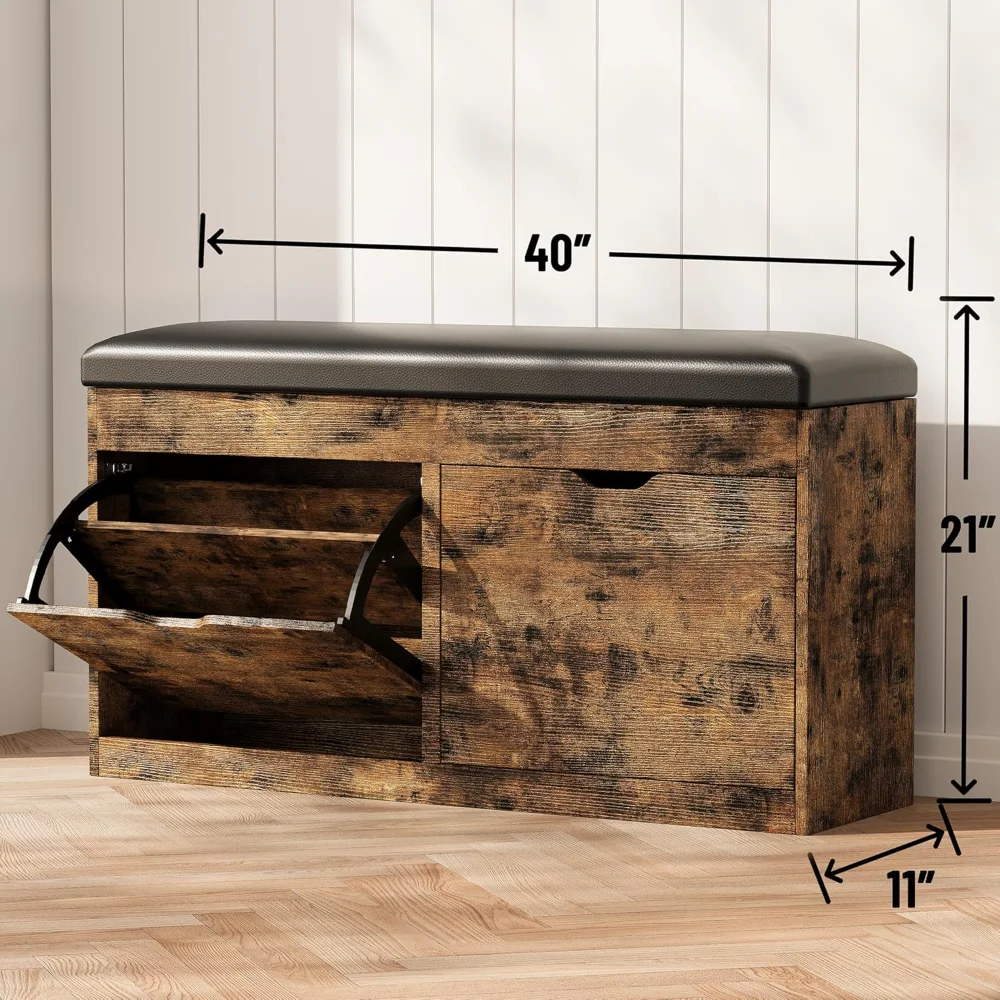
For spaces requiring both seating and storage, our entryway bench with drawers collection demonstrates how storage can integrate seamlessly while maintaining minimalist design principles.
Entryway Bench with Back, Modern Entryway Bench, Shoe Bench for Entryway
Price range: $463.13 through $474.44 Select options This product has multiple variants. The options may be chosen on the product pageCorner Entryway Bench, Entryway Bench with Cushion, Modern Entryway Bench, Shoe Bench for Entryway
$476.34 Select options This product has multiple variants. The options may be chosen on the product pageModern Entryway Bench, Wood Entryway Bench, Wood Mudroom Bench
$497.69 Select options This product has multiple variants. The options may be chosen on the product pageEntryway Bench with Cushion, Small Entryway Bench
$466.79 Select options This product has multiple variants. The options may be chosen on the product pageFarmhouse Entryway Bench, Modern Entryway Bench
$1,514.84 Select options This product has multiple variants. The options may be chosen on the product page- Price range: $785.40 through $897.63 Select options This product has multiple variants. The options may be chosen on the product page
Selecting the Perfect Minimalist Bench: A Practical Guide
Choosing the ideal minimalist bench requires methodical consideration of several factors to ensure it serves both your aesthetic vision and practical needs. Follow these steps for a successful selection process:
Step 1: Space Assessment
Begin with precise measurements:
– Available floor space (length and width)
– Traffic flow patterns around the intended location
– Height relationships with surrounding furniture
– Function identification (seating, storage, display, or combination)
Step 2: Material Selection
Choose materials based on:
– Existing decor materials and finishes for cohesion
– Practical considerations (durability needs, maintenance preferences)
– Desired visual weight (heavier materials like dark wood or concrete vs. lighter materials)
– Tactile qualities that enhance the sensory experience
Step 3: Quality Evaluation
Look for quality indicators:
– Solid construction with proper joinery (mortise and tenon, dovetail)
– Smooth, consistent finishes without irregularities
– Even, stable base that prevents wobbling
– Weight appropriate to size (suggesting solid materials rather than hollow components)
Step 4: Scale Consideration
Ensure appropriate proportions:
– Height relationship to surrounding furniture (typically lower than nearby seating)
– Visual weight balanced with the space (heavier pieces for larger rooms, lighter pieces for smaller spaces)
– Length proportional to the wall or area where it will be placed
– Appropriate depth for the function (narrower for passageways, deeper for primary seating)
For comprehensive guidance on creating cohesive entryways, our guide to essential furniture for minimalist entryways provides additional context for selecting benches that complement other minimalist pieces.
Styling Your Minimalist Bench: Maintaining Visual Simplicity
Styling a minimalist bench requires a deliberate approach that enhances its clean lines without creating visual clutter. The goal is to complement, not compete with, the bench’s inherent simplicity.
Do’s for Minimalist Bench Styling:
- Create intentional negative space around and on the bench
- Use a single striking element (like a sculptural plant) rather than multiple small objects
- Incorporate textural elements through simple cushions in natural fabrics
- Consider asymmetrical placement of minimal accessories for balanced interest
- Use objects with clean forms that echo the bench’s design language
Don’ts for Minimalist Bench Styling:
- Avoid cluttering the bench surface with multiple small items
- Skip decorative pillows with patterns or frills that contradict minimalist principles
- Don’t overcrowd the area around the bench with additional furniture
- Resist the urge to fill empty space simply because it exists
- Avoid seasonal decorations that create temporary clutter
When introducing textiles to minimalist benches, choose simple cushions in neutral tones or natural materials with subtle texture. A single cushion or folded throw in natural linen, wool, or cotton can add comfort without complicating the visual field.
Remember that in minimalist styling, restraint is the ultimate sophistication. The bench itself should remain the focal point, with any styling elements serving to enhance rather than overshadow its clean design.
For more guidance on maintaining clean visual lines throughout entry spaces, our guide to decorating entryways with clean lines provides complementary principles for creating cohesive minimalist transitions.
Where Minimalism Meets Personality: Customization Within Constraints
Minimalist design doesn’t mean sacrificing personal expression—rather, it channels that expression through thoughtful restraint and intentional choices. Customizing a minimalist bench allows you to maintain clean lines while incorporating elements that reflect your individual style.
Consider these subtle customization approaches:
- Natural material variations that add character (unique wood grain patterns, subtle marble veining)
- Finish selections that complement your specific space (matte vs. polished, warm vs. cool tones)
- Hardware upgrades that maintain minimalist principles (precision-crafted metal legs in your preferred finish)
- Cushion materials that add personal comfort preferences without visual complexity
The most successful customizations in minimalist bench design add character without compromising the bench’s essential simplicity. Think of it as adding a signature to the design rather than completely rewriting it—subtle touches that make the piece uniquely yours while respecting its minimalist integrity.
This balance between personal expression and minimalist discipline creates pieces with lasting appeal. By focusing customization on quality materials and thoughtful details rather than decorative additions, you create a bench that remains true to minimalist principles while reflecting your personal aesthetic values.
Minimalist Bench Style for Specific Home Aesthetics
Q: Can minimalist benches work in traditional homes without looking out of place?
A: Yes, minimalist benches can create beautiful contrast in traditional spaces. Choose natural wood finishes rather than highly industrial materials, and look for subtle curves rather than strictly geometric forms. This creates a bridge between traditional warmth and minimalist simplicity.
Q: How do I choose between Scandinavian and Japanese minimalist styles for my neutral home?
A: Consider your preference for visual weight and wood tones. If you prefer lighter, airier spaces with blonde woods, Scandinavian styles will feel more harmonious. If you appreciate deeper wood tones and more substantial presence, Japanese-influenced designs will better complement your aesthetic.
Q: Can minimalist benches work in a home with children and pets?
A: Absolutely. Look for minimalist benches with durable materials like solid hardwoods or metal frames, and consider storage options to contain toys or pet items. The clean lines of minimalist benches actually help create visual calm in busy family homes while offering practical functionality.
Simple DIY Bench Projects for the Minimalist Home
For those interested in creating custom minimalist benches, several approachable DIY projects maintain true minimalist principles while requiring minimal tools and experience:
Hairpin Leg Bench: Combine a solid wood slab with hairpin metal legs for industrial minimalist style. Approximate material cost: $75-150.
Floating Bench: Mount a simple wood plank to wall studs with hidden brackets for a clean, floating appearance. Approximate material cost: $50-100.
Concrete Top Bench: Create a simple wood base with a poured concrete top for modern minimalist appeal. Approximate material cost: $100-200.
Each of these projects can be completed in a weekend with basic tools and basic woodworking knowledge, allowing you to create custom minimalist pieces that perfectly fit your space and style preferences.

